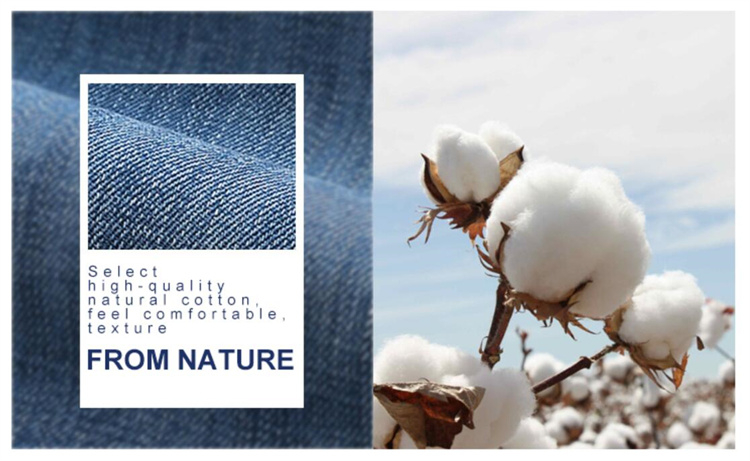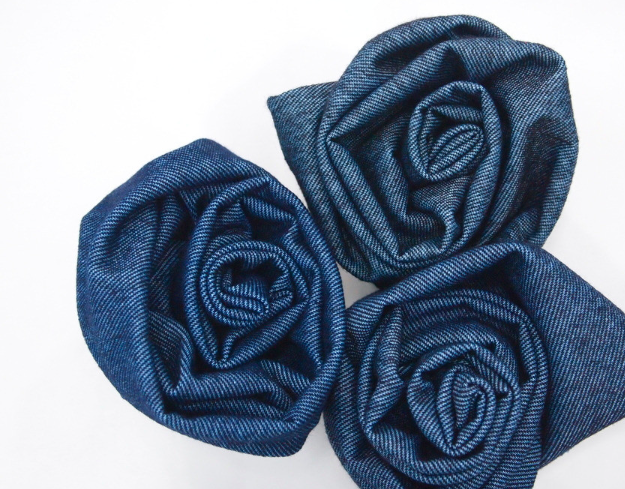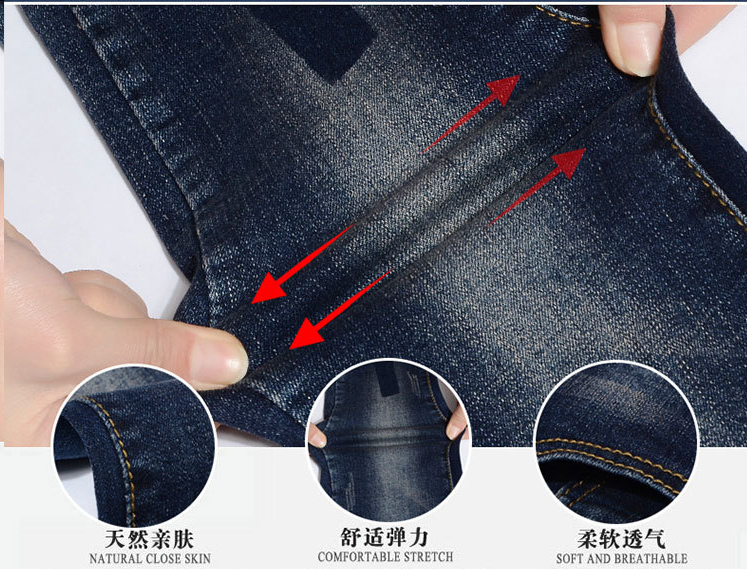Jeans are generally made of indigo water-brushed fabrics such as denim, tendon denim, and other fabrics such as suede, corduroy, and velveteen. At present, the more popular denim varieties at home and abroad are mainly ring-spun denim, warp and weft slub denim, super indigo dyed denim, over-color, assorted denim, and weft stretch denim, etc.
Jeans fabric classification introduction:
1. Bamboo
When designing slub yarns with different yarn numbers, different slub thicknesses (ratio to base yarn), length and pitch of slubs, single warp direction or single weft direction and both warp and weft directions are equipped with slub yarns. When normal yarns of different numbers or different numbers are properly proportioned and arranged, a variety of slub denims can be produced.
After the clothing is washed and processed, it can form a variety of hazy or clearer striped style denim, which is welcomed by consumer groups with personalized needs.
2. Ring spun yarn
With the development and application of new technology and equipment such as high-speed ring spinning, large packages, fine winding, and knotless yarns, the shortcomings of coarse yarn spinning length, low production efficiency, and many knots have been solved.
The situation in which denim yarns are replaced by airflow yarns is rapidly changing, and ring-spun yarns are making a comeback. Because ring-spun yarn denim has some properties that are superior to air-flow yarn, such as hand feel, drape, tear strength, etc.
At the same time, due to people’s psychological return to nature and the influence of the original development of the denim style, the more important reason is that the surface of the ring-spun denim garment will show a hazy slub-like style after grinding and washing, which is in line with today’s denim. Install personalized needs. The ring-spun slub can be spun into shorter and denser slubs, which has also promoted the development momentum of ring-spun denim.
3. Weft elasticity
The use of spandex stretch yarn has developed denim varieties into a new field, which can make denim garments both close-fitting and comfortable, coupled with slub or different colors, making denim products more suitable for fashionable and personalized consumer needs. Great development potential.
The elastic elongation is generally 20% to 40%. The size of the elastic elongation depends on the weave design of the fabric. The smaller the tightness of the warp and weft on the cloth machine, the greater the elasticity. On the contrary, the tightness of the warp yarn is fixed. The tightness of the elastic yarn in the weft direction is greater, the smaller the elasticity is, and the tightness in the weft direction reaches a certain level, and the elasticity may even be lost.
4. Chromatography
To increase the color and luster of the indigo denim varieties. For example, indigo over-dyeing sulphur black, indigo over-dyeing sulphur grass green, sulphur black green, sulphur blue, etc., to meet the individual needs of the market.
At the same time, denim manufacturers have their own patented new denim varieties to improve market competitiveness. It should be noted in this respect that the concentration of the mother liquor should be controlled as much as possible to prevent excessive overflow of the dye liquor from causing waste of dyes and expanding environmental pollution.
5. Special colors
Because clothing made of super indigo dyed or extra-deep indigo dyed denim can obtain special effects of strong and bright color after grinding and washing, it is widely welcomed by consumers.
As a professional jeans manufacturer, we can customize any fabric as your requirement.






















